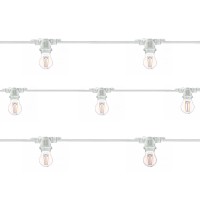LED lamp technology is becoming more and more widespread, thanks to its many advantages over traditional halogen lamps. One of these advantages concerns the ratio between the power emitted in lumens and that in watts, which represents an important indicator for evaluating the efficiency of the lamps.
In this article we will therefore go to understand what it means and how this ratio affects a light bulb. We will then also report some examples and we will explain why nowadays, preferring LED lamps is highly recommended.
Power ratio between Lumen and Watt
In simple terms, the ratio of power in lumens to watts indicates how efficient a lamp is at transforming electrical energy into visible light. For example, if a 60 watt halogen lamp emits 700 lumens, the power to brightness ratio will be approximately 11-12 lumens/watt.
LED lamps, on the other hand, have a much higher power-to-brightness ratio than halogen lamps. For example, an 8-watt LED lamp may emit the same amount of light as a 60-watt halogen lamp, but with a power-to-brightness ratio of approximately 80-90 lumens/watt.
This means that LED lamps are much more efficient at using electricity and, consequently, use less energy to produce the same amount of light. In other words, with an LED lamp you can obtain the same lighting results as a halogen lamp, but with much lower energy consumption.
LED bulbs
But the Lumen - Watt power ratio is just one of the many advantages of choosing LED lamps rather than halogen ones. In fact, LED lamps have a much longer life than halogen lamps, which burn out and need to be replaced more frequently. They can last up to 25,000 hours, compared to 2,000 hours for a halogen lamp. This means you spend less money on new lamps and reduce material waste.
Another benefit is lower costs, although LED lamps can cost more to purchase. But their higher energy efficiency and longer lifespan make them a cheaper option in the long run.
But that's not all because LED lamps are also a guarantee in terms of safety, because they emit less heat than halogen lamps, which makes them less dangerous for the surrounding environment.
Last but not least, there is the quality of the light, since they offer a more uniform and flicker-free light, which reduces eye strain and makes ambient lighting more pleasant.
In summary, LED lamps are a better option than halogen lamps in terms of energy efficiency, life span, safety and quality of light. In fact, as we have seen, the ratio between the power emitted in lumens and that in watts is a very important indicator for evaluating the efficiency of lamps.
If you want to know more, don't hesitate to contact us on our Light Diffusion website!
Written by Alice Pruccoli











































